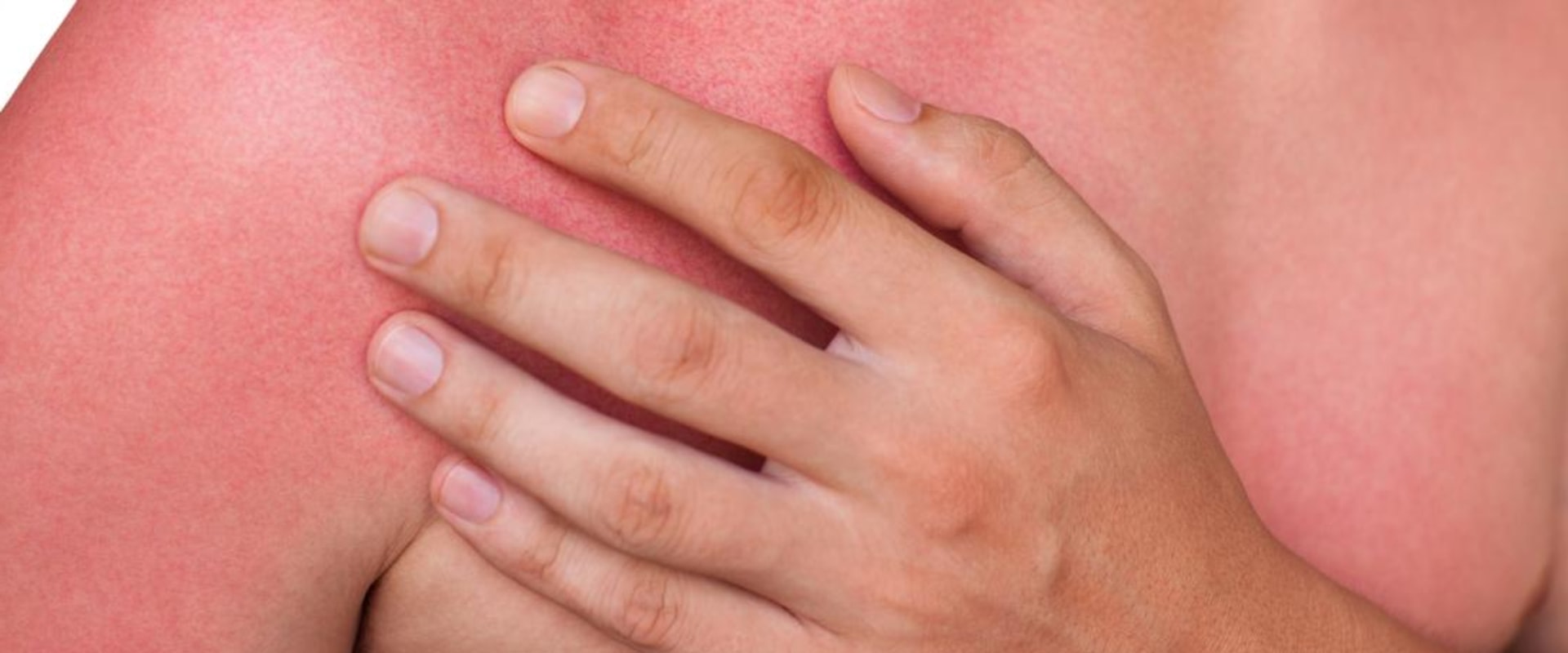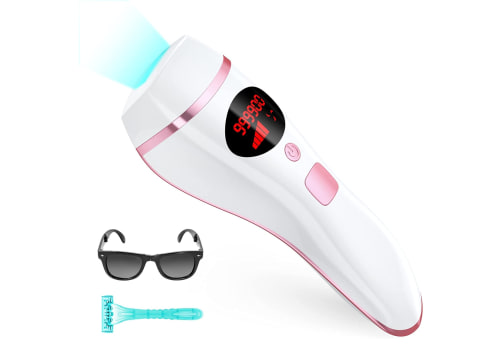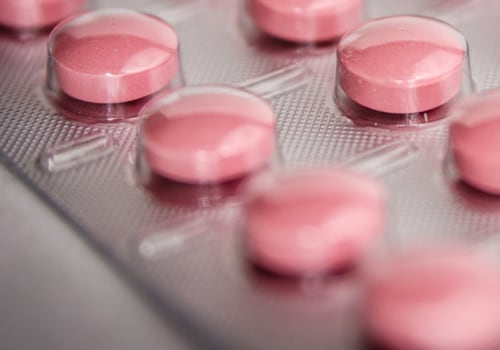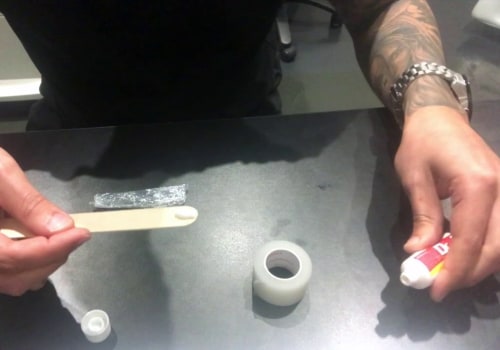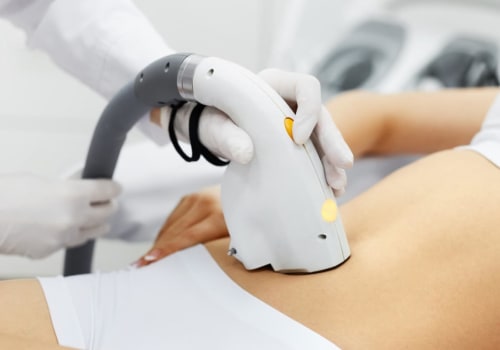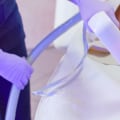When it comes to laser hair removal, many people are unaware of the possible short-term side effects that can occur. One of the most common short-term side effects is redness and swelling of the treatment area. It is important to understand the causes and symptoms of this side effect in order to take the necessary precautions. Redness and swelling of the treatment area is a common side effect of laser hair removal, and is usually temporary. It can be caused by a number of factors, such as the sensitivity of the skin, the intensity of the laser, or even an allergic reaction.
Fortunately, most cases of redness and swelling are minor and will resolve on their own within a few days. In this article, we will discuss the causes and symptoms of redness and swelling of the treatment area, as well as how to manage it. We will also provide some tips to help you minimize your risk of experiencing these side effects. Redness and swelling of the treatment area is a common side effect of laser hair removal. It is typically caused by the heat from the laser, which damages the skin in the treatment area. The skin responds to this damage by becoming red, swollen, and sometimes painful.
Redness and swelling can last for a few days or up to a week, depending on the individual. Fortunately, there are steps that can be taken to reduce the redness and swelling. Applying cold compresses to the treatment area can help reduce both redness and swelling. Additionally, over-the-counter medications such as ibuprofen or acetaminophen can help reduce pain and swelling.
It's important to keep the treated area clean and dry, as well as avoid exposure to sunlight or other sources of UV radiation. There are also some steps that can be taken to reduce the risk of redness and swelling. First, it is important to make sure that the laser technician is qualified and experienced in using laser hair removal. Additionally, using lower energy levels can help reduce the risk of redness and swelling.
Finally, it is important to follow any pre-treatment instructions given by the technician before the procedure. While it is generally considered a safe procedure with few risks, there are some who disagree. Some people argue that laser hair removal can cause long-term damage to the skin, including scarring and discoloration. However, there is no scientific evidence to support these claims. In fact, many experts agree that laser hair removal is safe when performed correctly. In summary, redness and swelling of the treatment area is a common side effect of laser hair removal.
The redness and swelling typically last for a few days or up to a week. Fortunately, there are steps that can be taken to reduce both redness and swelling, such as applying cold compresses, taking over-the-counter medications, keeping the area clean and dry, and avoiding UV radiation. Additionally, there are steps that can be taken to reduce the risk of redness and swelling, such as ensuring that the technician is qualified and experienced, using lower energy levels, and following pre-treatment instructions.
How Long Does Redness and Swelling Last?
Redness and swelling of the treatment area typically last between 1-3 days after laser hair removal. Depending on the individual, the redness may last a little longer or dissipate earlier.Some clients may experience slight swelling for up to a week after treatment. It is important to note that these symptoms should improve over time. It is normal for the treatment area to feel warm and tender for up to 48 hours following laser hair removal. This is due to the heat generated from the laser, which helps to target and destroy unwanted hair follicles.
As time passes, the skin should return to its normal color and the tenderness should subside. In some cases, redness and swelling can be more pronounced. If these symptoms persist or worsen, it is important to contact a doctor or dermatologist as soon as possible. This can help to rule out any potential complications or adverse reactions to the laser hair removal treatment.
What Causes Redness and Swelling?
Redness and swelling in the treatment area after laser hair removal is typically caused by inflammation.Laser hair removal works by targeting the melanin in hair follicles with a beam of light. This light energy is absorbed by the melanin and converted into heat, which then destroys the hair follicle. The heat from the laser can also cause inflammation of the surrounding skin, leading to redness, swelling, and tenderness. In some cases, redness and swelling can be caused by an allergic reaction to the laser or to any of the topical creams or other products used during the procedure.
It is also possible for people with sensitive skin to experience a reaction even if they are not allergic. The redness and swelling should not last more than a few days and can usually be managed with over-the-counter anti-inflammatory medications such as ibuprofen or acetaminophen. Applying cool compresses to the affected area may also help reduce redness and swelling.
Laser Hair Removal
Inflammation
Allergic Reaction
Redness
Swelling
Anti-Inflammatory Medications
Tips for Reducing Risk of Redness and Swelling
Redness and swelling of the treatment area is a common side effect of laser hair removal.Luckily, there are ways to help reduce the risk of experiencing these side effects. Here are a few tips to keep in mind:Avoid Certain Medications: It is important to avoid certain medications before your laser hair removal treatment, as they can increase your risk of redness and swelling. These medications include aspirin, ibuprofen, and other blood-thinning drugs. Speak with your doctor about any medications you are currently taking to ensure they are safe to use before laser hair removal.
Stay Out of the Sun:
It is important to stay out of direct sunlight for at least two weeks before and after your laser hair removal treatment.Sun exposure can make your skin more sensitive, increasing your risk of redness and swelling.
Apply Sunscreen:
In addition to avoiding direct sunlight, you should also apply sunscreen on the treated area daily. This will help protect your skin from the sun's harmful rays and prevent redness and swelling.Stay Hydrated:
Staying hydrated is important for any type of medical procedure, including laser hair removal. Drinking plenty of water will help keep your skin hydrated and reduce the risk of redness and swelling.Use an Ice Pack:
You can reduce the risk of redness and swelling by applying an ice pack to the treatment area after the procedure. The cold temperature will help reduce inflammation and discomfort.How to Reduce Redness and Swelling
Redness and swelling of the treatment area are common side effects of laser hair removal.Fortunately, there are several steps you can take to reduce the intensity of these side effects.
Cold Compresses
Applying a cold compress to the affected area can help reduce inflammation and redness. You can use a cold compress for 15-20 minutes at a time, several times a day. You can also alternate between a cold compress and a warm compress, if desired.Avoid Direct SunlightExposing the treated area to direct sunlight can increase inflammation and redness. Make sure to cover the affected area with clothes or sunscreen when outdoors, and avoid sunbathing or tanning beds.
Topical Treatments
There are several topical treatments that may help reduce redness and swelling. These include aloe vera gel, witch hazel, and hydrocortisone cream. Talk to your doctor about which topical treatments are best for you.Other Considerations
To reduce redness and swelling, it’s also important to keep the treated area clean and moisturized.Avoiding harsh soaps and using a gentle cleanser can help keep the area clean without irritating it further. Additionally, applying a moisturizer regularly will help keep the skin hydrated. It is important to be aware of the potential short-term side effects of laser hair removal, such as redness and swelling of the treatment area. Knowing what causes these side effects, how long they last, and how to reduce them can help you manage them quickly and effectively.
If redness or swelling persists, it is important to contact a doctor immediately. By following the tips provided in this article, you can reduce your risk of experiencing redness and swelling after laser hair removal.
